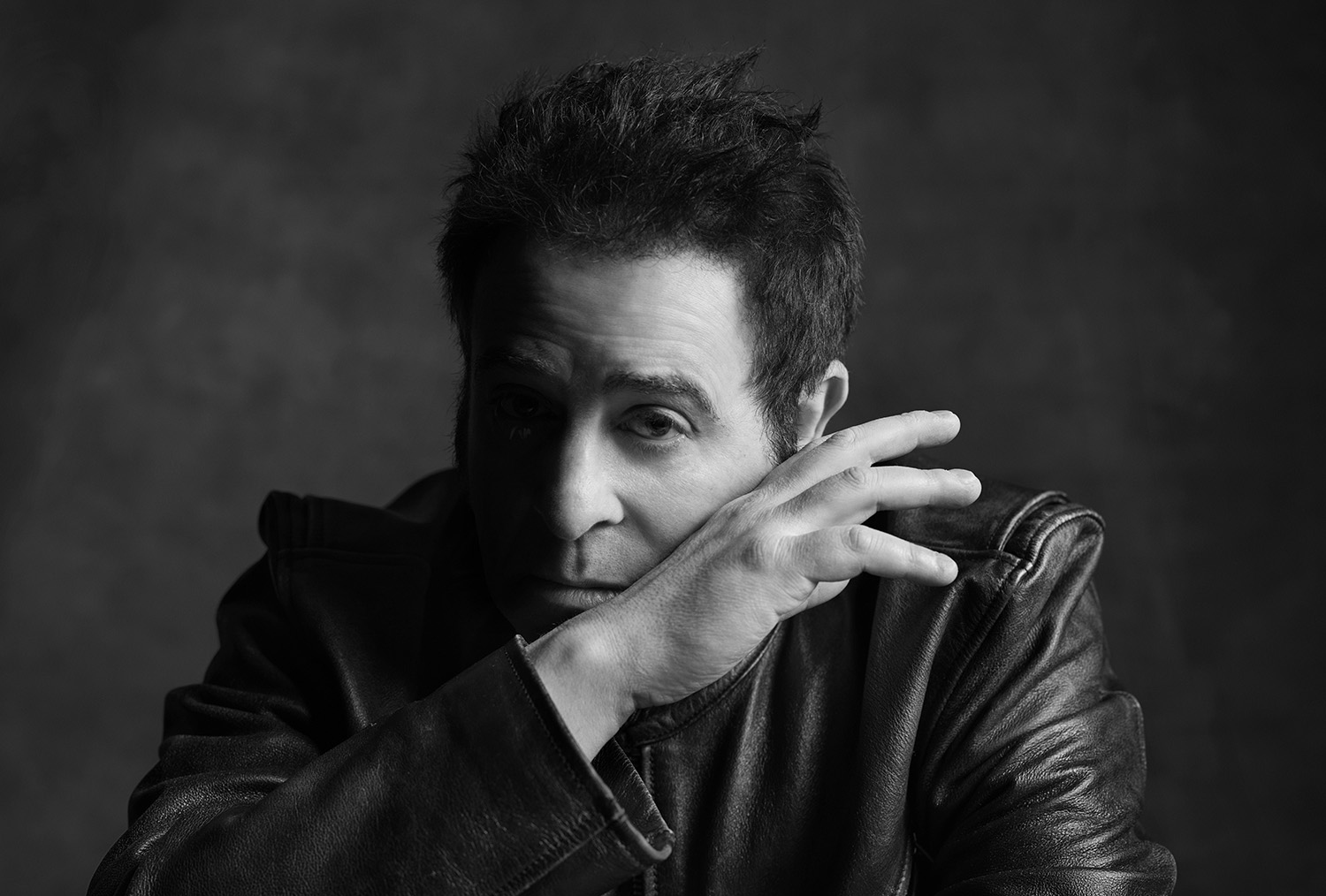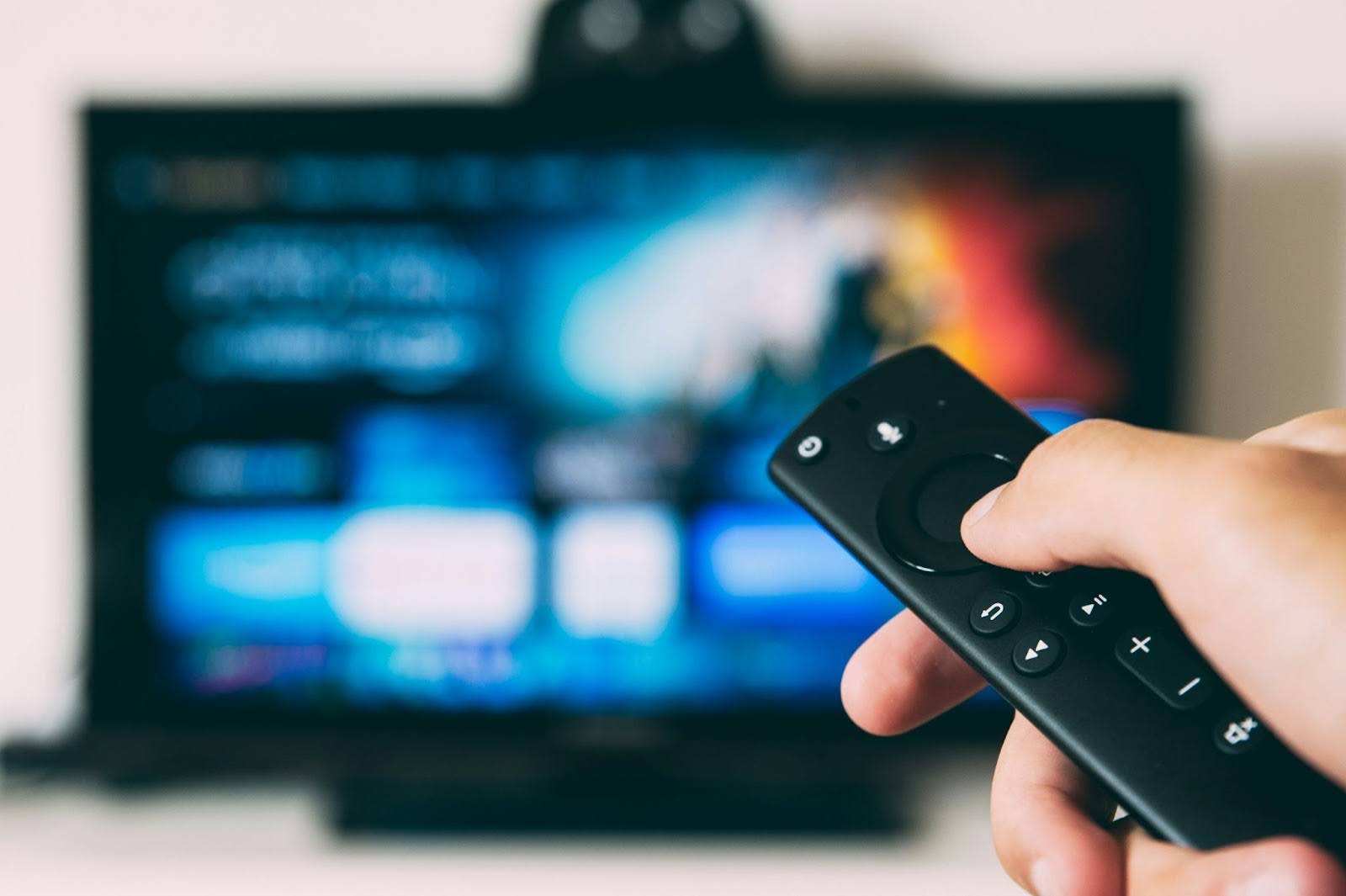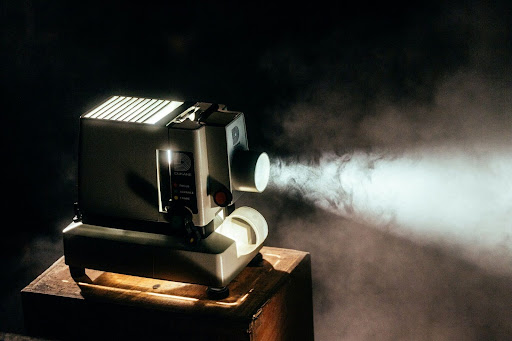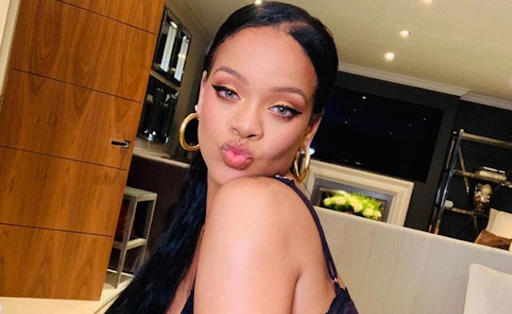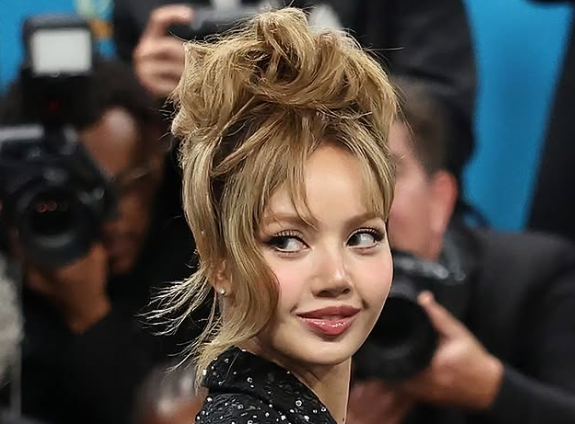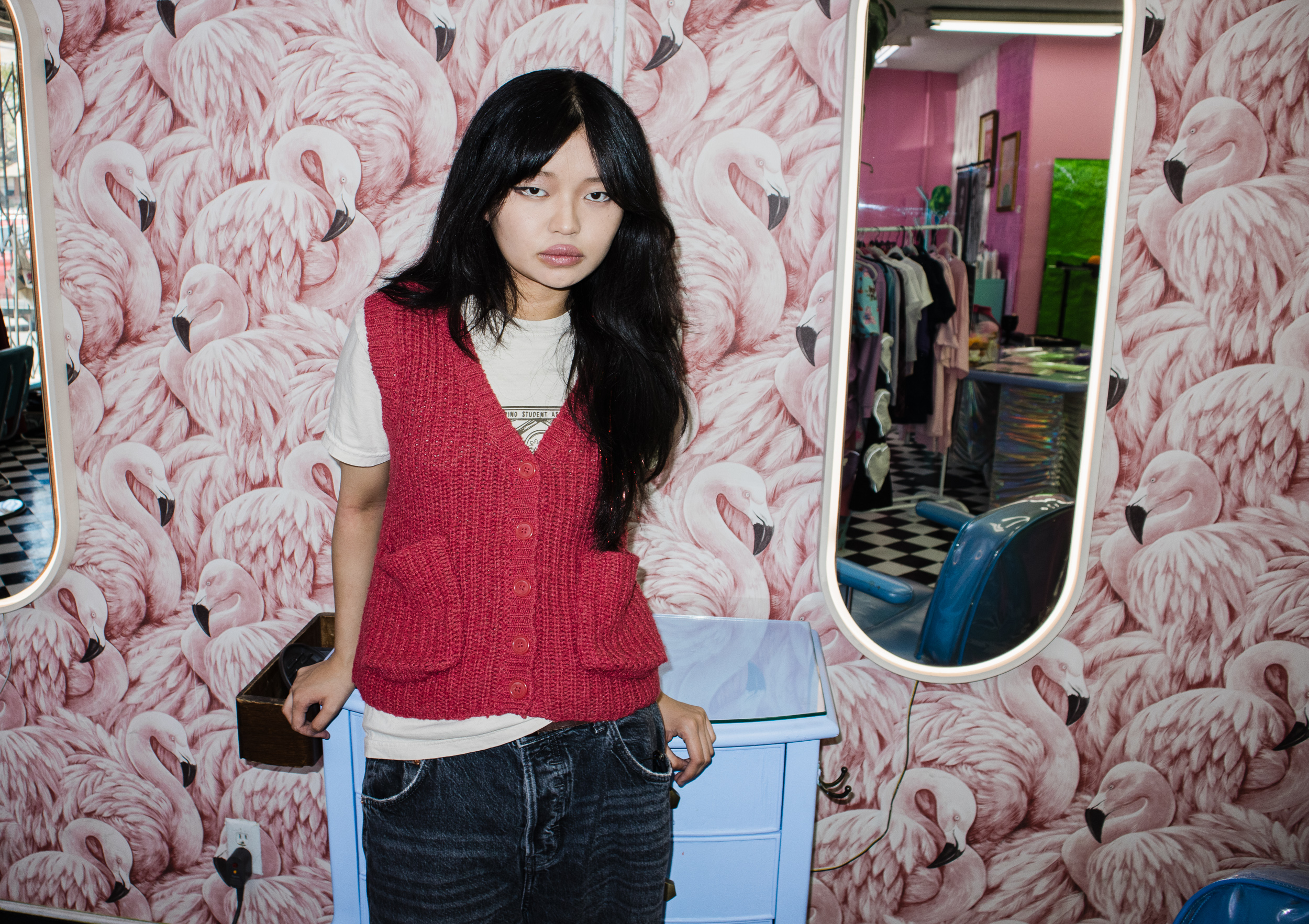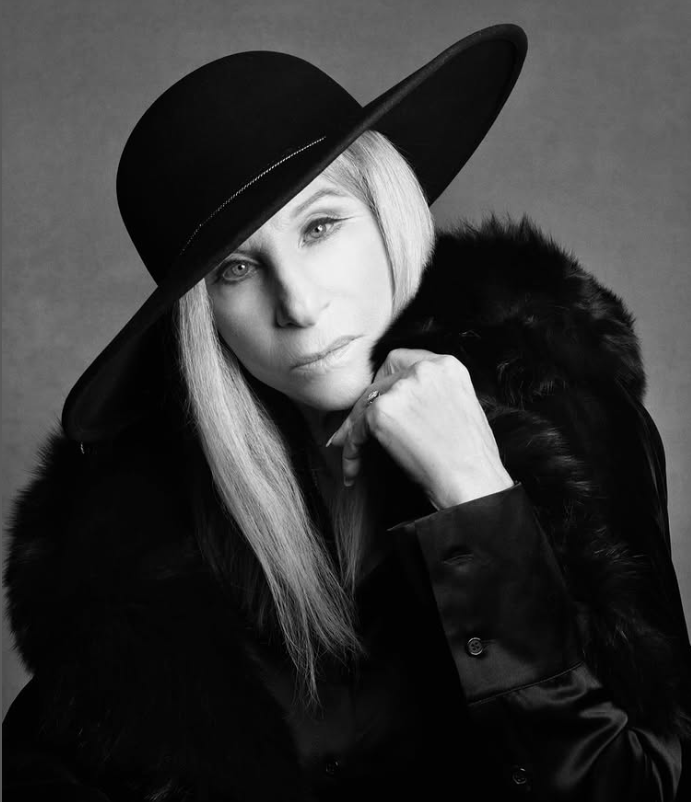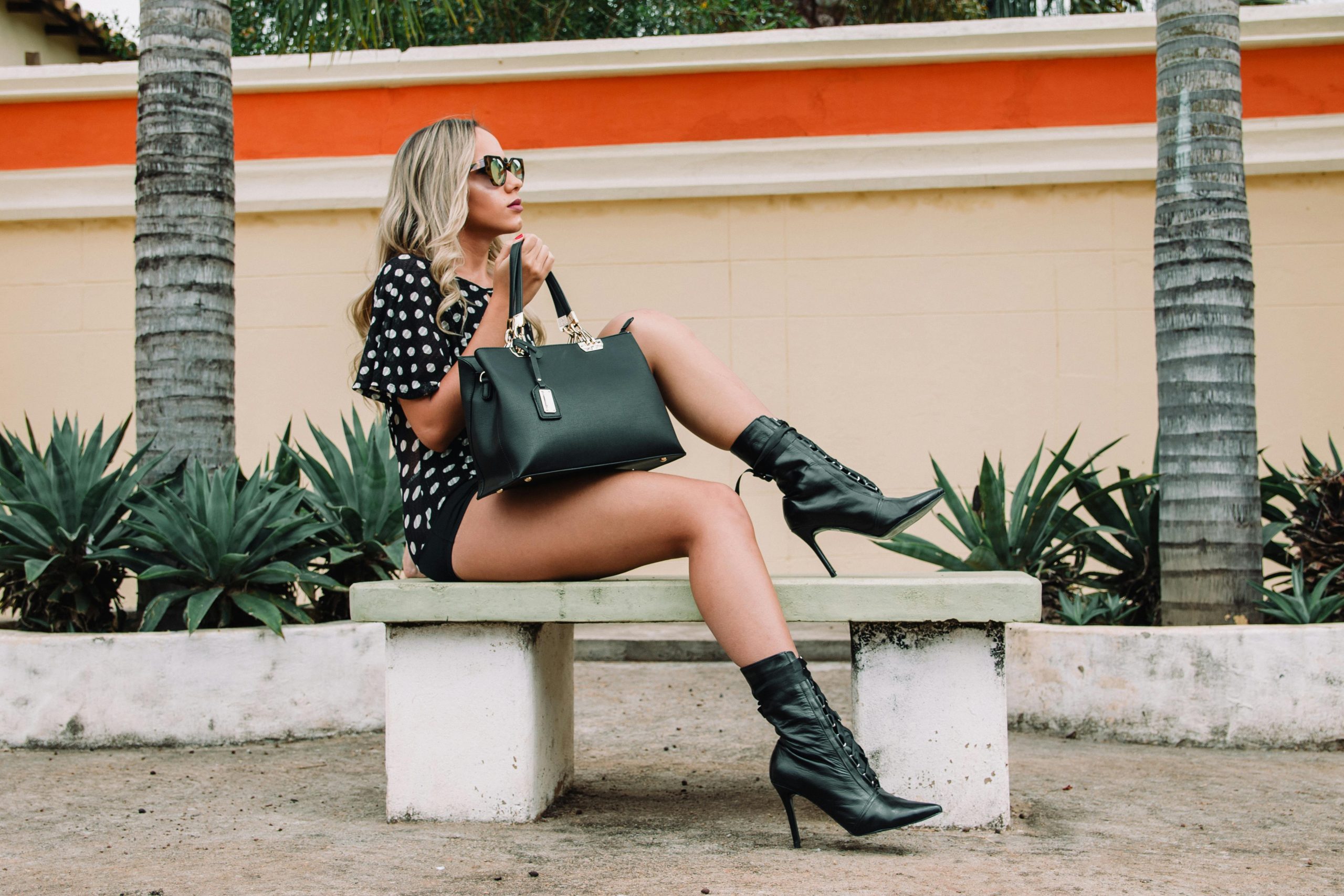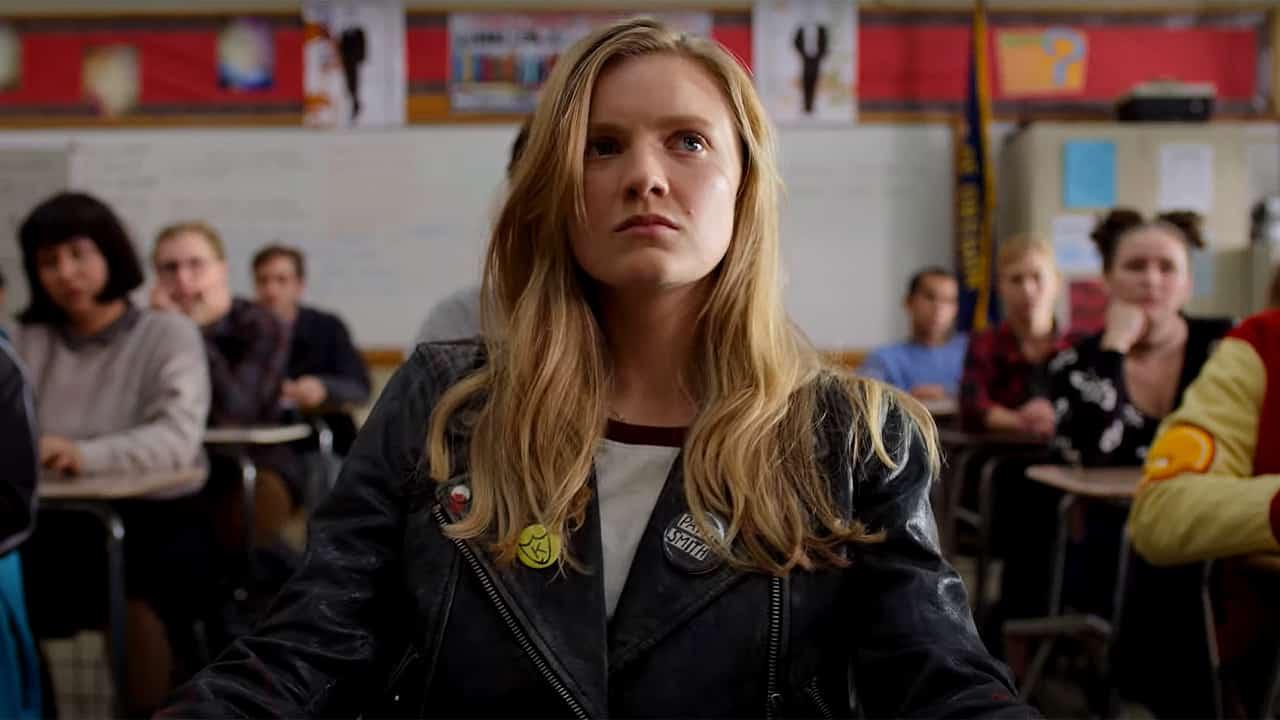
Courtesy of Netflix
Warning: This article contains spoilers of Netflix’s Moxie.
Like Bo Burnham’s quirky drama Eighth Grade and Olivia Wilde’s buddy comedy Booksmart, Netflix’s latest original movie, Moxie — based on Jennifer Mathieu’s 2015 novel of the same name — offers a sense of comfort for the weird girls.
Directed by and starring Amy Poehler, Moxie is centered around an introverted, mannerly 16-year-old named Vivian (Hadley Robinson). Vivian is instantly fascinated by the school’s new girl, Lucy (Alycia Pascual-Peña), who boldly dismisses the harassments made at her by football team captain Mitchell (Patrick Schwarzenegger).
Inspired by Lucy’s defiance, Vivian goes home and rummages through her mother’s (Poehler) box of feminist punk memorabilia, sourced during her glory days as a riot grrrl in the ’90s and with Bikini Kill cassettes and DIY punk zines abound. Later in the week, after a list of sexist superlatives circulates throughout the school — “Best Rack,” “Most DTF” — Vivian storms into her local copy store to print the first batch of Moxie, her own feminist zine that soon starts a schoolwide revolution.
Moxie | Official Trailer | Netflixwww.youtube.com
Moxie was a fun watch for me because it reminded me of some of the best parts of my own adolescence: curating my Tumblr blog, discovering bands like Beat Happening and Sleater-Kinney, poring over the now-shuttered Rookie Magazine and realizing that whoa, feminism is cool, actually.
But the film also recalls some of the worst parts of growing up as a girl. I was particularly struck by how Moxie handled the issue of subtler sexism; on the first day of school, when Mitchell waltzes into class late, he spots Lucy sitting in the front row and stares at her. “Can I help you?” she asks. “I don’t know, can you?” Mitchell mutters back, as if to gauge what sexual favors she could offer him.
Interactions like these, albeit slightly histrionic in the film, mirror my own experiences of being verbally harassed in classrooms in clear sight of teachers who did nothing to stop it. Moxie articulates how these boys-will-be-boys type behaviors can compound into dangerously abusive habits.
After multiple occasions of harassment by Mitchell, Lucy, who is Afro-Latina, attempts to file a complaint to the school’s principal, who immediately dismisses the allegations. Vivian attempts to cheer Lucy up by telling her to “ignore him,” giving Mitchell a pass because “he’s been an idiot since the second grade.”
Lucy politely declines Vivian’s poor advice: “You know that annoying can be more than just annoying, right?” Lucy says. “Like, it can be code for worse stuff?” Unsurprisingly, Mitchell isn’t punished until the final moments of the film, when his ex-girlfriend reveals that he had assaulted her.
Like Vivian, I remember being a teenager and hearing Bikini Kill’s “Rebel Girl” for the first time. “That girl thinks she’s the queen of the neighborhood / I got news for you: she is!” vocalist Kathleen Hanna hollers on the track, which has become an anthem of riot grrrl: the underground feminist punk movement that arose in the early 1990s in the Pacific Northwest. Alongside like-minded bands like Heavens to Betsy and Bratmobile, Bikini Kill were seen as pioneers of this movement with their radically feminist lyrics.
Rebel Girlwww.youtube.com
But, like Vivian, I was also naive at 16, not yet familiarized with the nuances of feminism outside of my own white, middle-class, college-educated bubble. As much as riot grrrl swept the nation and made an inarguable impact, it was often criticized for being, well — overwhelmingly white, middle-class, and college-educated. Moxie briefly acknowledges these critiques, but ultimately the film only further perpetuates riot grrrl’s disappointing history of whiteness.
The writers of Moxie are clearly aware of riot grrrl’s whiteness issue — “We weren’t intersectional enough,” Vivian’s mom reflects in one scene. “We called our meetings pow-wows!” — but the film’s script still feels like a watered-down dose of feminist theory for white audiences.
Lucy’s character exemplifies multiple tropes that we often see in Black women and girls in film. Although we can safely assume that Lucy and Vivian are the same age, Lucy is positioned as a wise Fairy Godmother figure whose sole purpose is to magically appear from out of town and teach Vivian about intersectionality.
Although Vivian clearly doesn’t make a good first impression on Lucy, Lucy is still quick to befriend her. In Lucy, we see elements of both the nurturing mammy caricature, as well as the token Black friend trope that’s plagued endless coming-of-age movies.
Vivian’s other best friend is Claudia, a straight-A student with an overbearing Chinese mother (another oft-overlooked racial stereotype in film). When school administration begins cracking down on the origins of the still-anonymous Moxie, Claudia takes one for the team by falsely confessing that she started the zine, despite Vivian keeping her truth under wraps.
When Vivian attempts to apologize to Claudia, the latter briefly discusses the pressure she feels to succeed academically as a Chinese-American: “You don’t get what’s going on with me because you’re white.” Race is never discussed again in the film.
Although Moxie portrays feminism better than Netflix’s recent girlboss crime thriller I Care a Lot, Moxie isn’t immune to the issues of race exclusivity that have permeated riot grrrl since its inception. “I distinctly remember the white women within the punk scene were capable of being just as exclusionary and bigoted as the men were,” critic and author Laina Dawes wrote in her essay “Why I Was Never a Riot Grrrl.” “Among the white women I knew who identified as feminists, there was a strong sense that there was little to no concern as to how ethnicity made my experiences as a woman different than theirs.”
Like just about every popular music genre, feminist punk started with Black people. Arguably the first feminist punk anthem is “Oh Bondage Up Yours!,” the 1977 debut single by English band X-Ray Spex. “Some people think that little girls should be seen and not heard / But I say oh bondage, up yours!” wallops the band’s vocalist, Poly Styrene. Styrene, who was Anglo-Somali, was arguably the forerunner of feminist punk as we know it today. But once that breed of punk morphed into riot grrrl, Black women were suddenly excluded from the conversation.
X-Ray Spex – Oh Bondage! Up Yours!www.youtube.com
Despite Moxie‘s racially diverse cast, it’s impossible to ignore a glaring issue in the script: Vivian only created the titular zine because she witnessed a Black classmate being harassed. And although Vivian spends most of the film trying to keep people from finding out she’s the creator of Moxie — which is a pretty un-punk move, if you ask me — she still comes out on top as the film’s hero by the final scene.
Moxie is clearly well-intended; it warms my heart to think of teenage girls watching it and feeling inspired to start feminist movements at their own schools. But I can’t help but worry that, of those teenage girls, most — if not all of them — will be white. I’m still waiting on a coming-of-age film that lets a whip-smart Black girl like Lucy lead a revolt instead.

